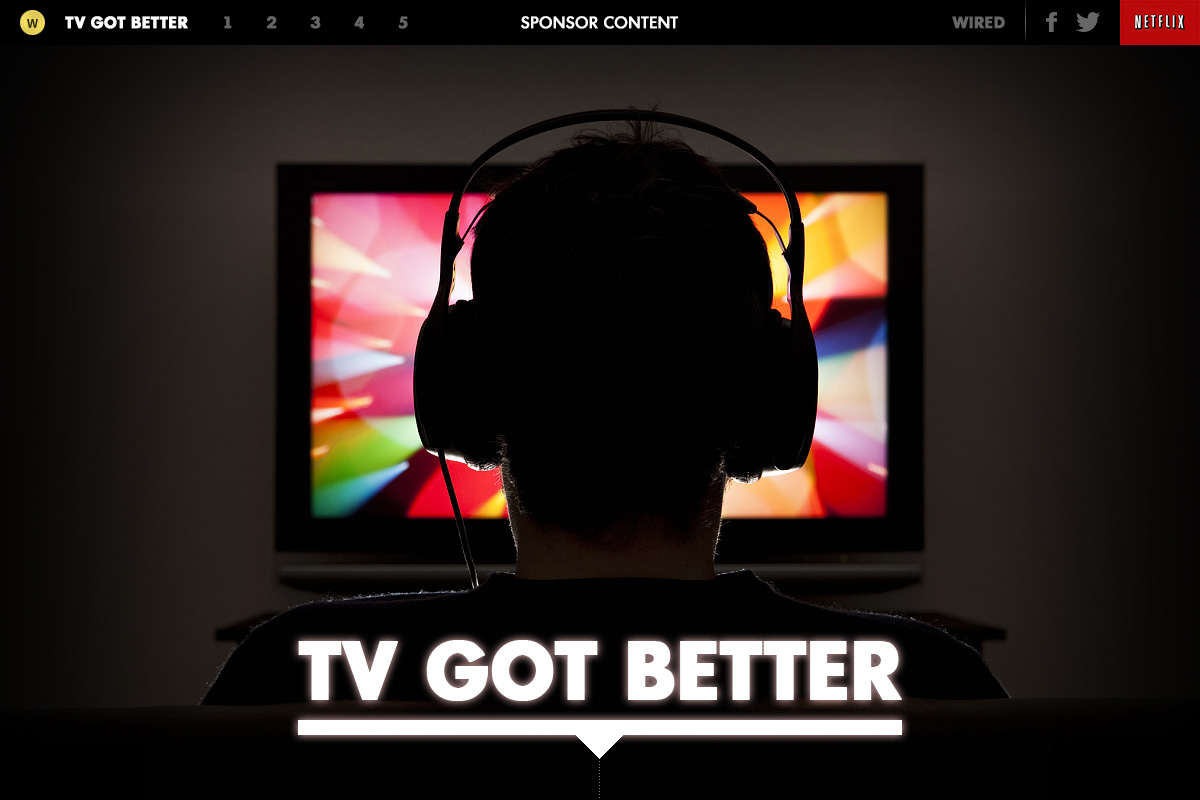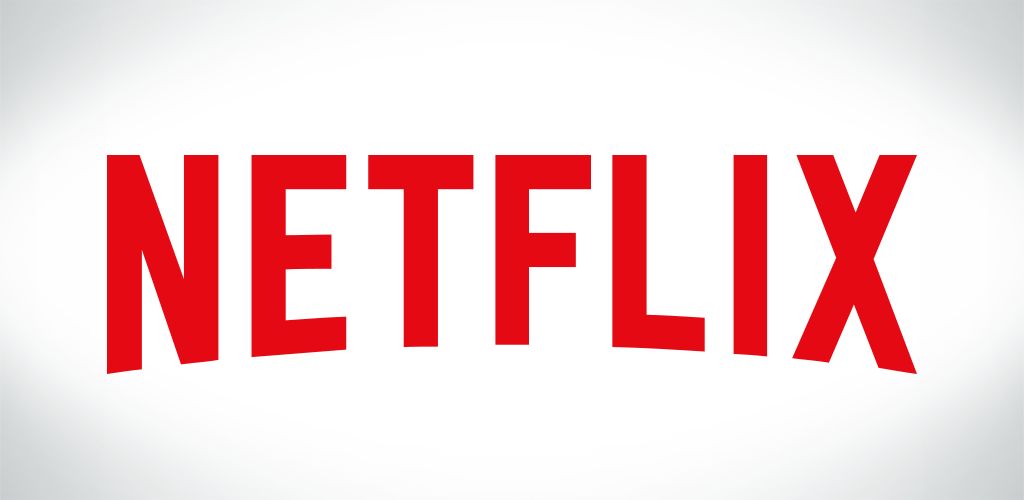To talk about changes in TV viewing quality
To read an article about Netflix and decide the summary, make notes, and determine the author’s stance
To learn and practice distancing expressions and apply when writing a short opinion piece
What is Media Studies?
Have you done Media Studies at High School or Uni?

In 2014, streaming video service Netflix launched an advertising campaign with the slogan ‘TV Got Better’.
How do you think TV and TV series have got better over the last 20 years?
Think about:
• choice
• technology
• quality of programmes
• variety of programmes
• opportunities to watch
Watch the video
1. When did the TV industry first begin in the USA?
2. What did TV producers continue to do in the 60s, despite criticism?
3. What drove the network's programming strategy?
4. What did the birth of cable do?
5. What is time-shifted viewing?
6. How have viewers responded to improved quality in programming?
Language focus:
Listen out for these phrases - number them in the order you hear them....
a change on the horizon
new wave
enter the picture
virtuous cycle
light and carefree
to know no bounds
can't get enough
spoiler alert
a vast wasteland
diverse subject matter
pushing the envelope
Check:
1. light and carefree
2. a vast wasteland
3. a change on the horizon
4. new wave
5. diverse subject matter
6. pushing the envelope
7. enter the picture
8. virtuous cycle
9. to know no bounds
10. can't get enough
11. spoiler alert
Talk about what they mean.
Talk about the video's claims. Do you agree with them?
What are some of the criticisms people make about TV these days?
What is an Abstract in an academic paper?
Check
Abstracts often contain abstract concepts which are hard to understand but it’s worth reading them closely and ‘getting to grips’ with them as they will make it easier to understand the article.
Look at the abstract below. What are some of the abstract concepts in it?
Check
Pierre Bourdieu's discourses of distinction
Tryon's promises of plenitude, participation, prestige, and personalization
to naturalize
viewing practices
technological narrative cutting edge

What does it mean to "naturalise" something as "cutting edge"?
Uses of abstract language in the main text:
Talk about the video's claims. Do you agree with them?
What are some of the criticisms people make about TV these days?
What is an Abstract in an academic paper?
Check
An abstract is a brief summary of a research article,
thesis, review, conference proceeding, or any in-depth analysis of a particular
subject and is often used to help the reader quickly ascertain the paper's
purpose.
Abstracts often contain abstract concepts which are hard to understand but it’s worth reading them closely and ‘getting to grips’ with them as they will make it easier to understand the article.
How can the following techniques help with this?
• use an English-English dictionary
• try to guess what expressions might mean
• use the internet to check technical terms
Look at the abstract below. What are some of the abstract concepts in it?
Abstract
This paper analyzes the promotional strategies of Netflix,
arguing that the company reinforces what Pierre Bourdieu has called the
discourses of distinction. In particular, the streaming service highlights what
Tryon calls the promises of plenitude, participation, prestige, and
personalization. Netflix highlights these discourses in part through its
ongoing engagement with subscription cable channel HBO, and in part through
promotional materials such as its TV Got Better campaign, which sought to naturalize
viewing practices such as binge watching as being part of a technological and
narrative cutting edge.
What do you think Bourdieau means by "discourses"?

See if this simple video helps you...
discourses of legitimation
promotional discourses
advertising discourses
differentiated
modes of delivery
conventions
transformative potential
During a speech at the 2013 Guardian Edinburgh Television Festival, Kevin Spacey, star of the Netflix original series, House of Cards, positioned the streaming video service, Netflix, as a source for prestigious and engaging entertainment. Spacey’s comments aligned House of Cards (2013–) with the prestige of British television and international art house cinema. He did so through both textual and industrial discourses, pointing out that Netflix had fully committed to purchasing twenty-six episodes of House of Cards without requiring the show’s producers to make a pilot. Instead, the creators of the show could, as Spacey described it, get to the real work of developing complex characters and detailed storylines that would keep audiences engaged. Spacey went on to compare the political drama with the cinema, asking rhetorically, “Is thirteen hours watched as one cinematic whole really any different from a film?”
For those of us who work in media and TV studies, Spacey’s use of the discourses of legitimation is entirely familiar, but what seems notable here is that he links the practice of binge viewing to quality television. Popular discourse has historically treated television as a “vast wasteland,” a drug, or junk food. But, beginning in the 1990s, the subscription cable channel HBO famously branded itself and its foray into original programming with the slogan “It’s not TV. It’s HBO.” This slogan became associated with shows such as The Sopranos (1999–2007), Sex and the City (1998–2004), and Oz (1997–2003), which were differentiated from TV in general, a move that Netflix borrowed from in its own promotional discourses. Netflix’s uses of these discourses serve to define the streaming service against traditional television while also making streaming video into something that will fulfill the promise of textual novelty, of new storytelling practices that were unimaginable in the past. In particular, Netflix’s self-promotion places emphasis on its ability to deliver the promise of prestige, plenitude, and participation to its subscribers, through a mix of technological and aesthetic appeals that are meant to position Netflix as the future of television. Through these discourses, Netflix has situated itself as the future of television. This claim found its most explicit expression in its “TV Got Better” campaign, in which anthropologist Grant McCracken recoded the practice of “binge viewing” as “feasting,” a phrasing that recasts the practice of watching TV as healthy, as a good form of consumption.[2] This paper argues for a closer examination of advertising discourses that promote streaming video—and other new modes of delivery—as a technological solution to the limitations of more traditional forms of television. Although these technological changes have altered the social, legal, cultural, and economic conventions associated with TV as a medium, they also exaggerate their transformative potential. Thus, instead of treating streaming and on-demand formats as revolutionizing television, we should instead see them as convenient narratives that serve to promote more desired modes of media consumption.

No comments:
Post a Comment